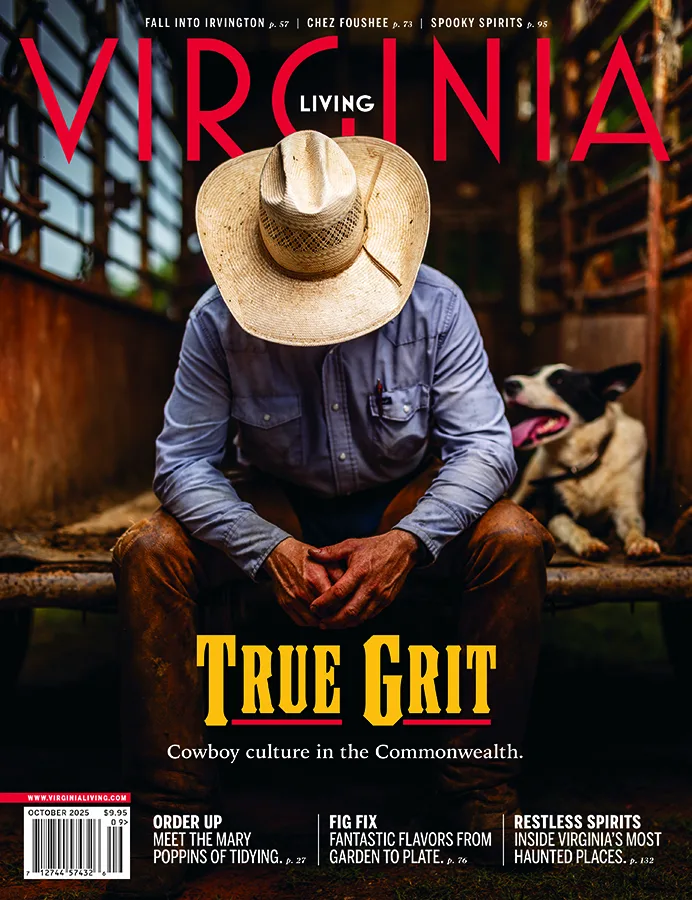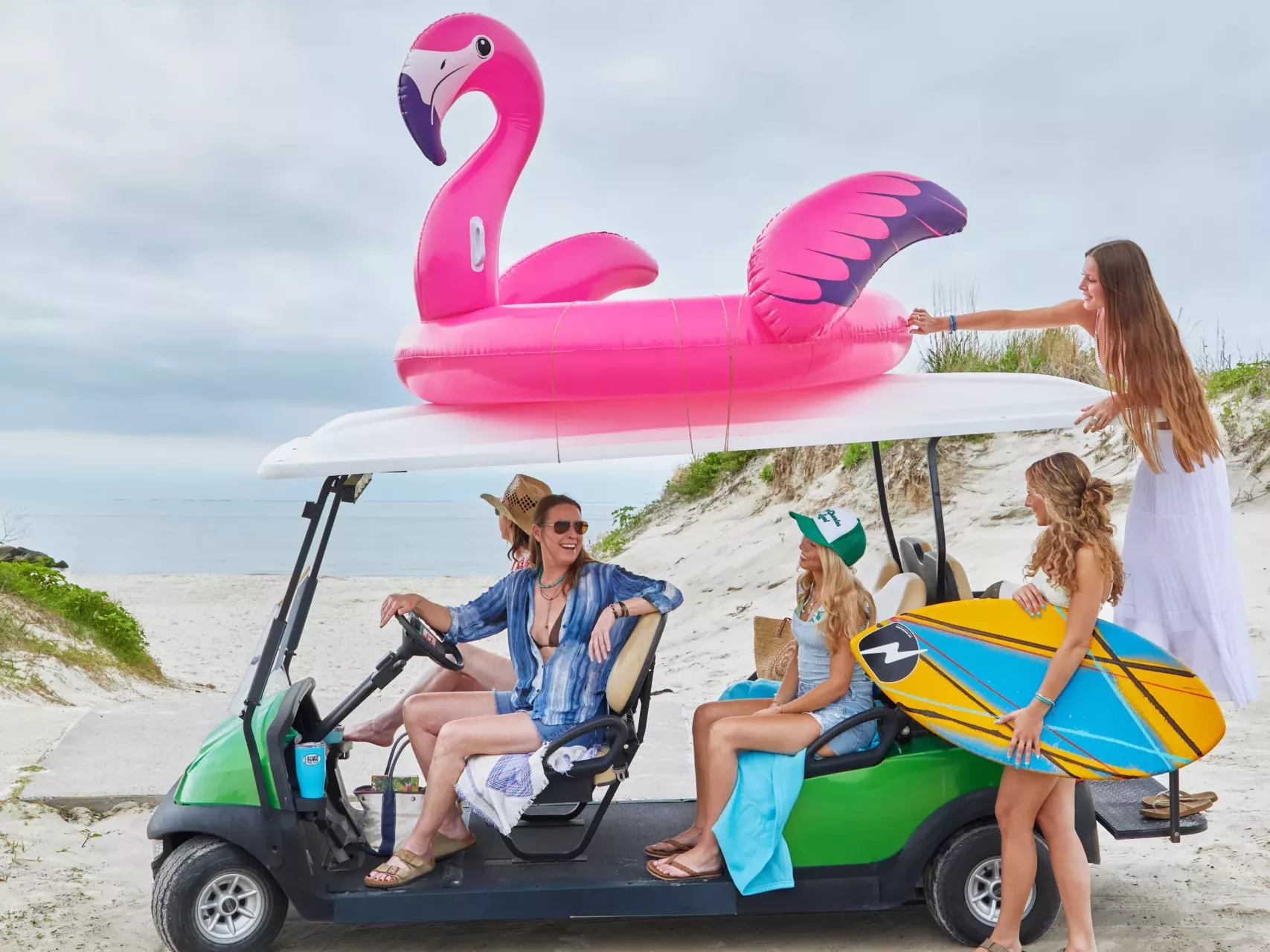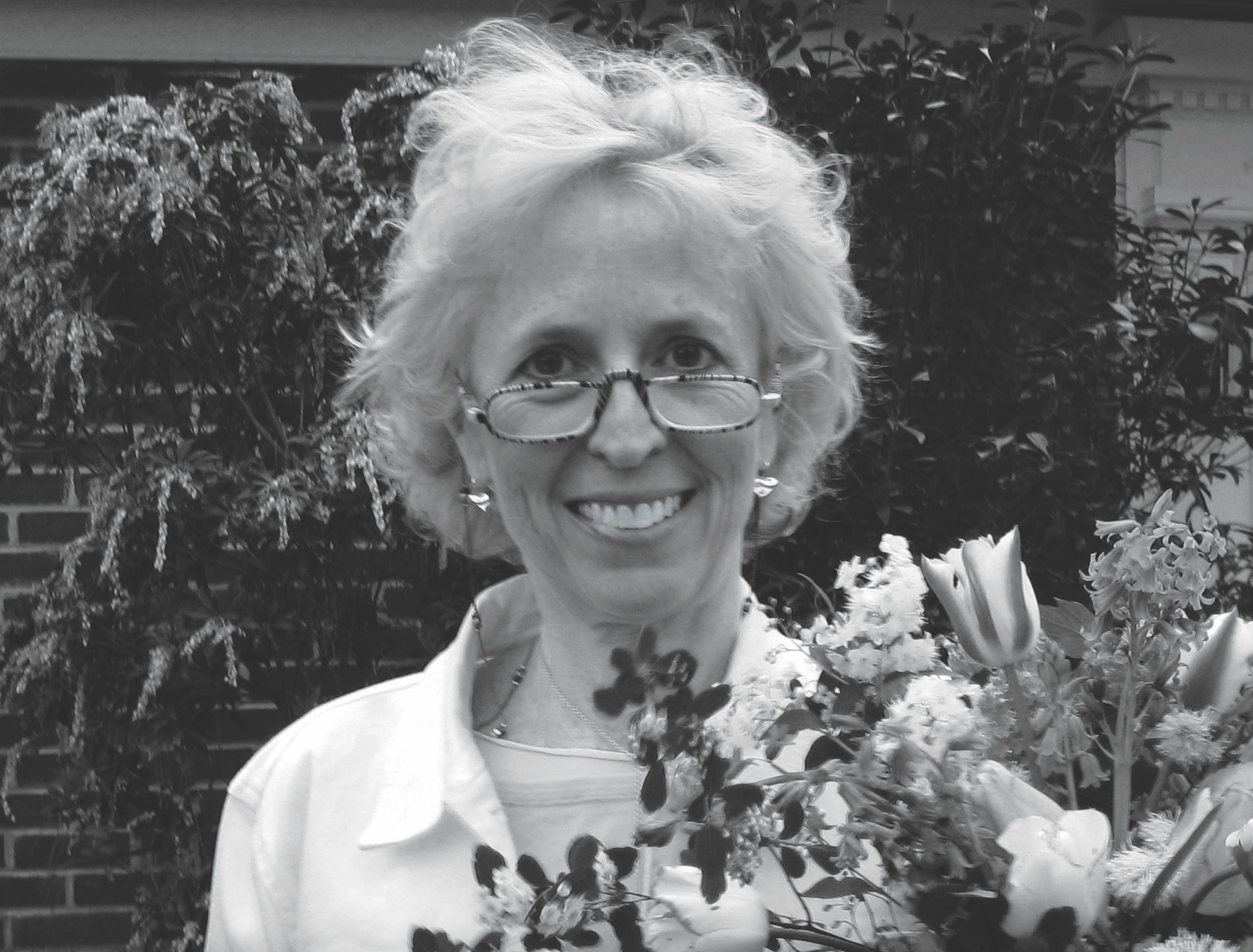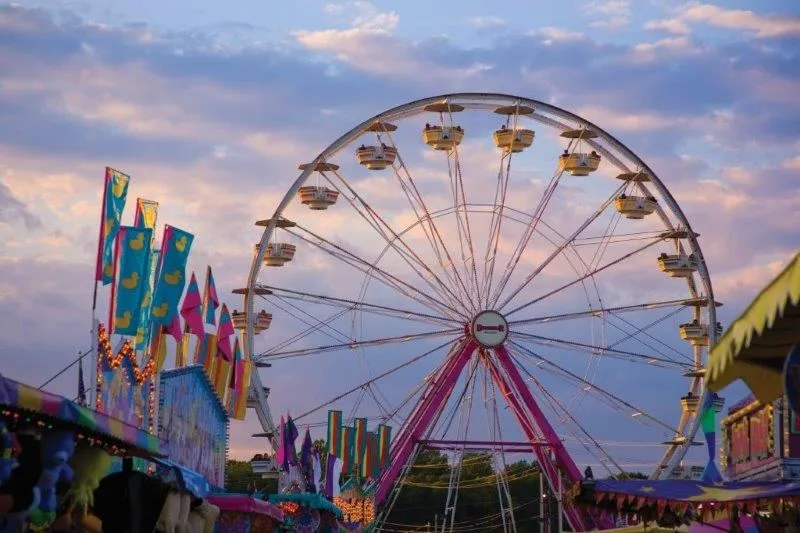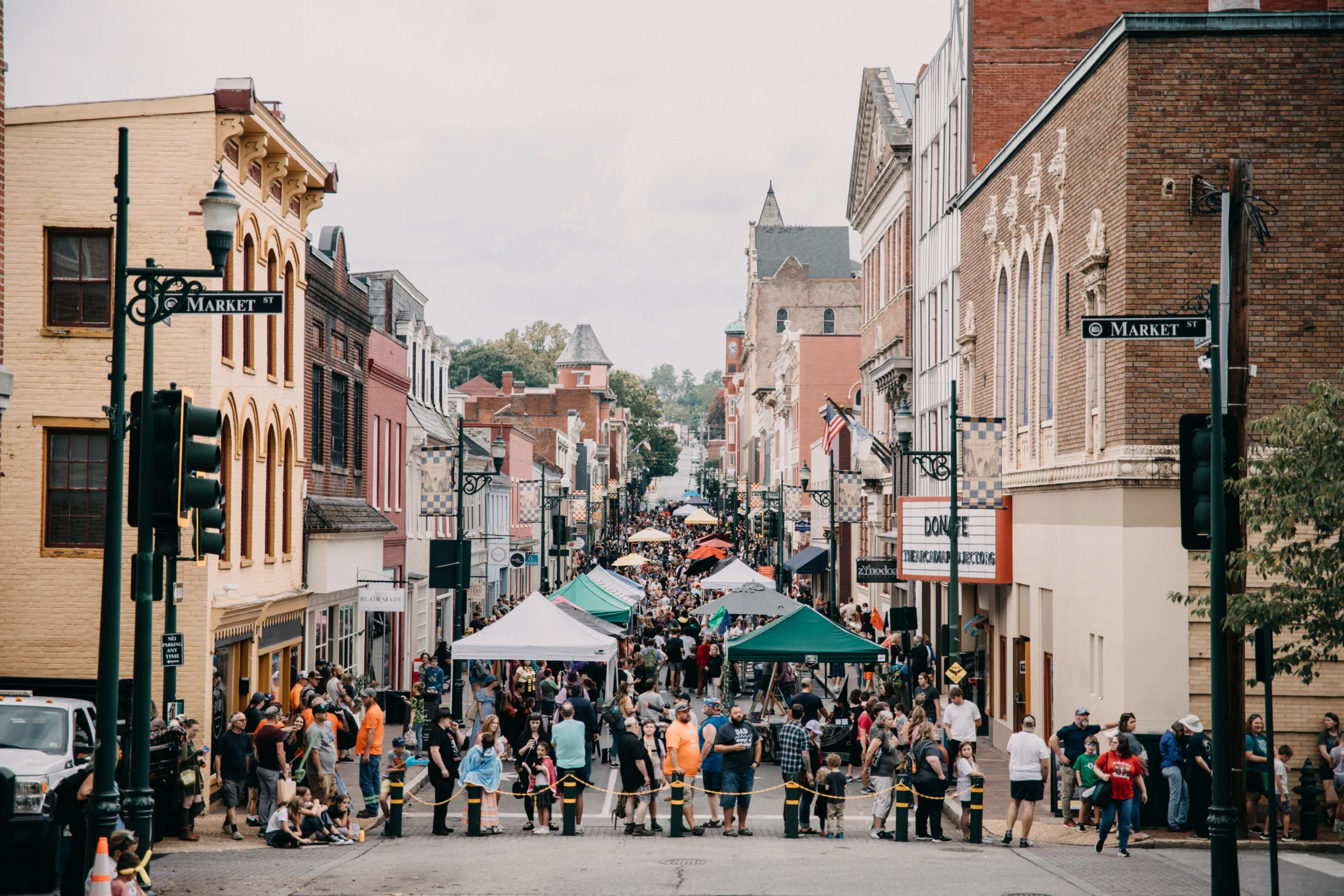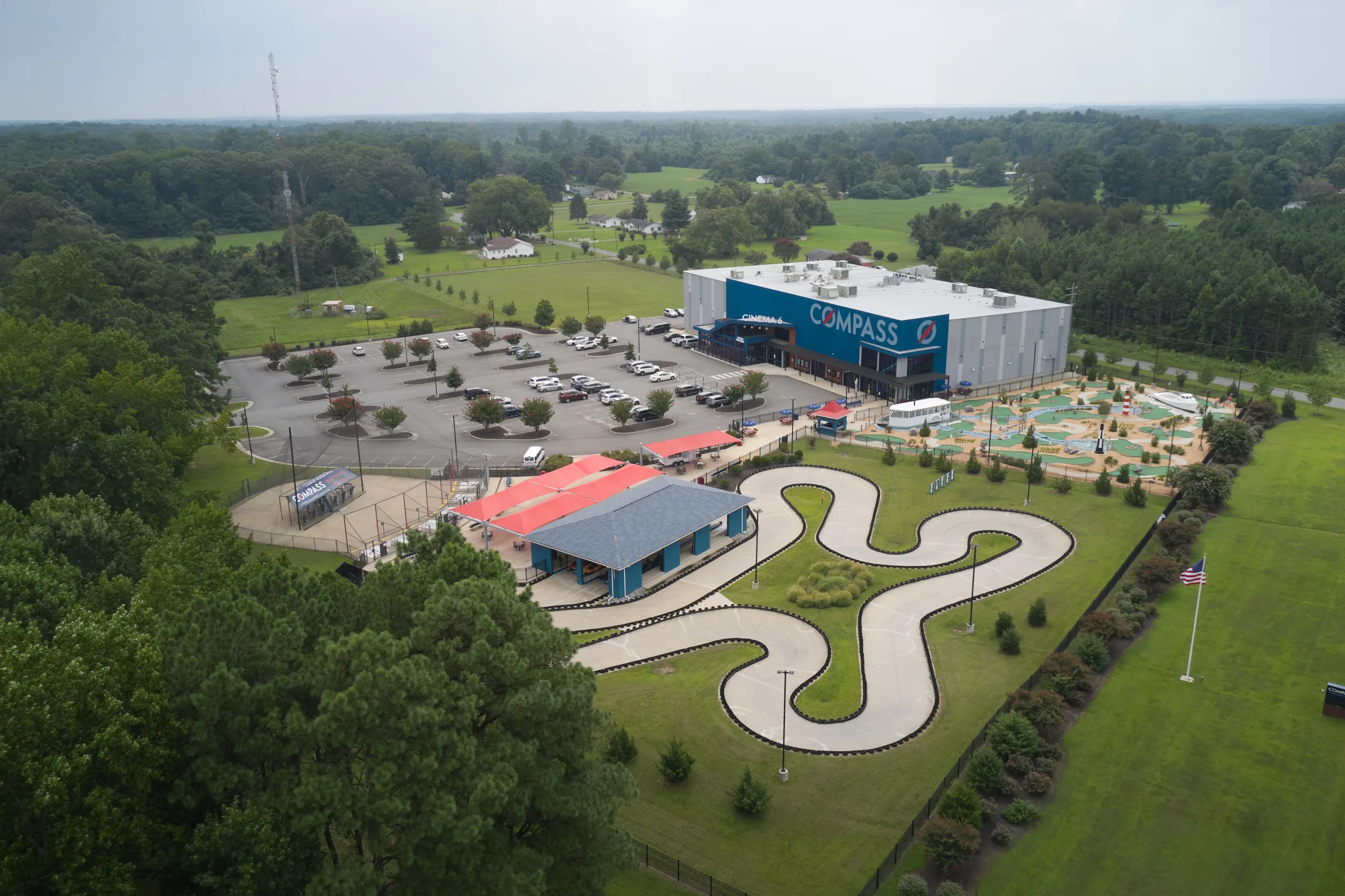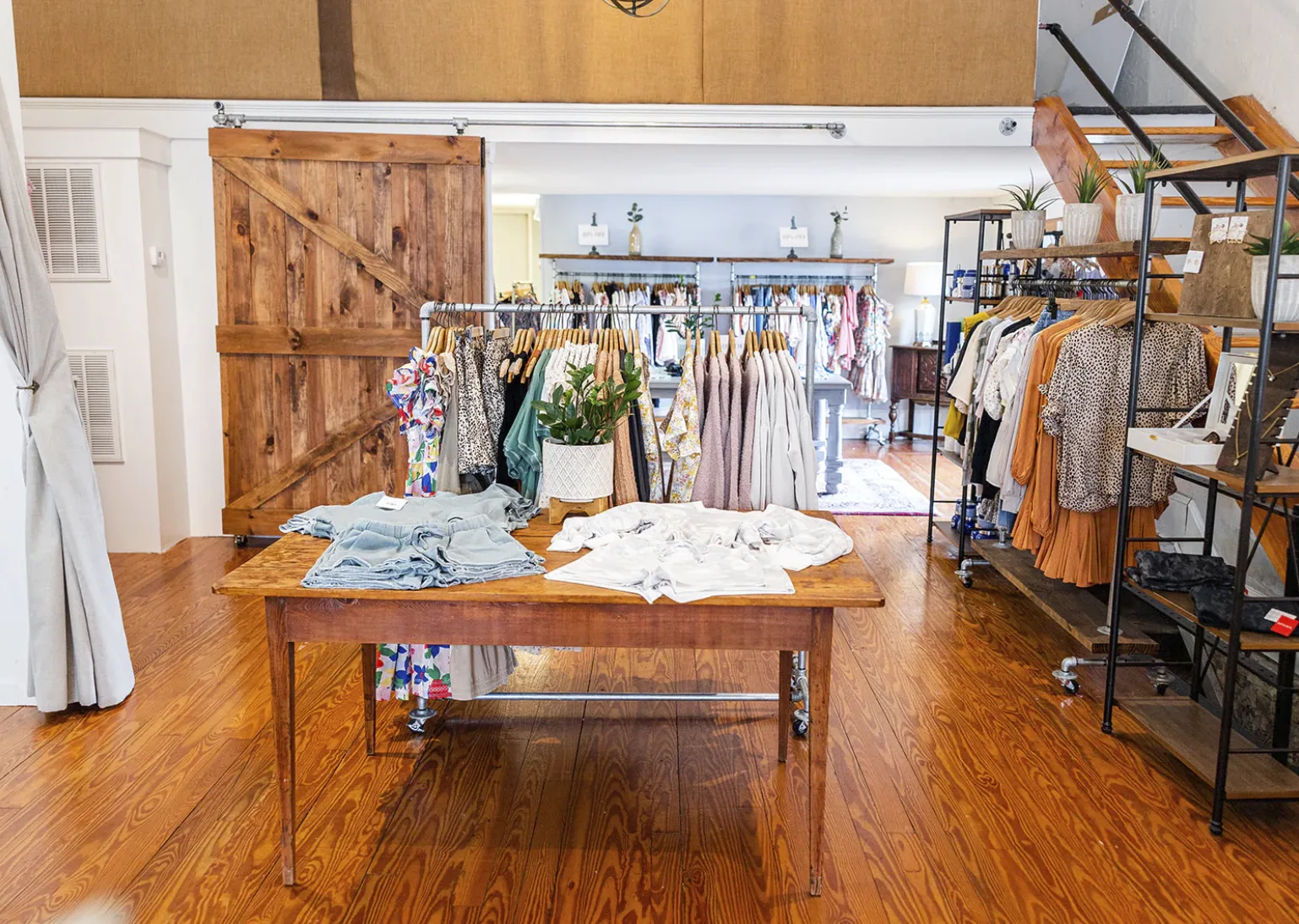With street names like Plum, Nectarine, and Strawberry, my husband and I imagine we’re approaching Mayberry, America’s quintessential small town. Tidy Victorian houses dot the roads along our approach, the quaint factor of Cape Charles rising with every block we pass.
We motor up to the corner of Tazewell Avenue and Peach Street where a sprawling Colonial Revival with a big wraparound porch backs up against the town’s very own Central Park. It’s the Bay Haven Inn, owned by Tammy and Jim Holloway, who relocated to the Eastern Shore from Northern Virginia in 2011.
Tammy greets us with open arms, and we tour her Grande Dame of an inn that dates to 1901. With spacious parlors on the first floor and four generous guestrooms upstairs, the inn exudes an elegantly relaxed charm. She and Jim have thought of every conceivable convenience—from linens to toiletries, beach towels to snacks and beverages. Guests—many of whom return year after year—have the run of the house.
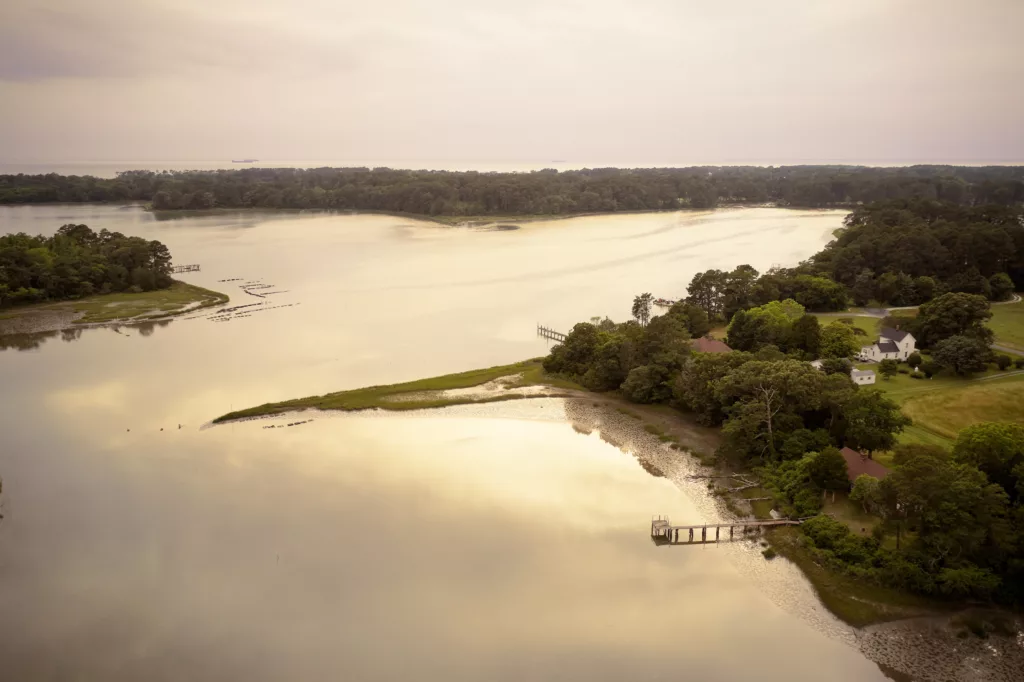
And We’re Off
The four of us hop in their six-seater golf cart for a town tour. “We call Cape Charles a ‘cart life’ community,” Tammy tells us, explaining that many visitors swap their cars for golf carts during their stay. As we explore, it’s hard not to notice the town’s friendly factor—Tammy and Jim wave to every person they pass, recounting stories of Cape Charles’ history and fill us in on tales of the town, its history and heritage.
It’s hard not to drink the Cape Charles Kool-Aid. Many of the houses we ride by resemble places like Seaside, Florida, in miniature, painted in colors of the town’s famous sunsets—blues, greens, oranges, yellows—and complete with architectural details like ornate gingerbread trim, steeply pitched roofs, and decorative gables. Some are recently renovated; others are being rehabbed, with a handful still waiting patiently for the right owner to come along.
When the Holloways arrived 14 years ago, the picture wasn’t so pretty. Gesturing down Tazewell Avenue, Tammy explains that all up and down the street, “the houses were a wreck. They were abandoned with broken windows and roofs falling in.” It was not Cape Charles’ finest hour. And, as we glide up and down streets named for fruit trees (and Virginia statesmen), she says there was a day when people would buy multiple houses on a credit card. “You could get a house for $10,000 or $15,000—they were that cheap.”
History 101
In Cape Charles’ heyday, it was a booming railroad town that moved goods up the East Coast and across the bay by railroad barge to Norfolk. At its peak, 300 railroad cars passed through the town daily. It was more cosmopolitan than its rural neighbors, boasting paved streets, electricity, and telephones.
After the railroad’s decline post-World War II, the town was devastated, with 90 percent of buildings needing restoration by the 1990s. But the Victorian gem has enjoyed a renaissance since its National Historic Register listing in 1991. Historic home enthusiasts, retirees, and young families have rediscovered its charms, transforming it into a thriving waterfront destination.
Thirty of the Bay Haven’s guests have relocated here—either permanently or as a second home. “They’ll buy a house and fix it up, then use it as a vacation rental property until they’re ready to retire,” Tammy says.
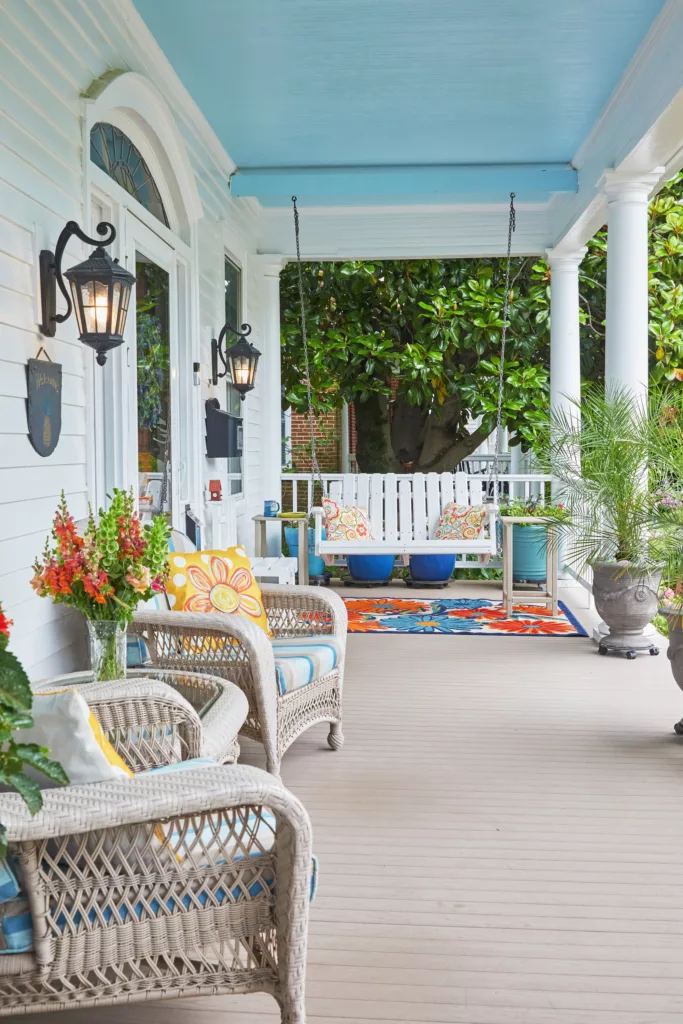
The Bay Haven Inn’s spacious and welcoming front porch make guests feel right at home.
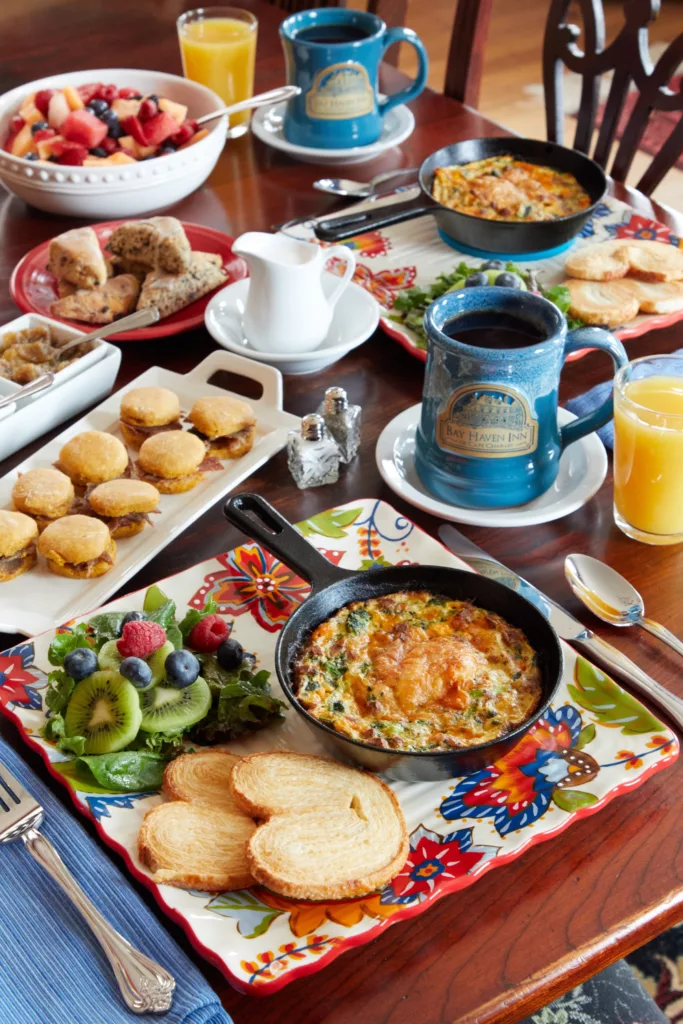
Breakfast at Bay Haven Inn is known as the best in town (with good reason). Pictured here are skillet frittatas, fresh fruit, cones with homemade jellies and jams, fresh fruit juice, and sweet potato and ham biscuits.
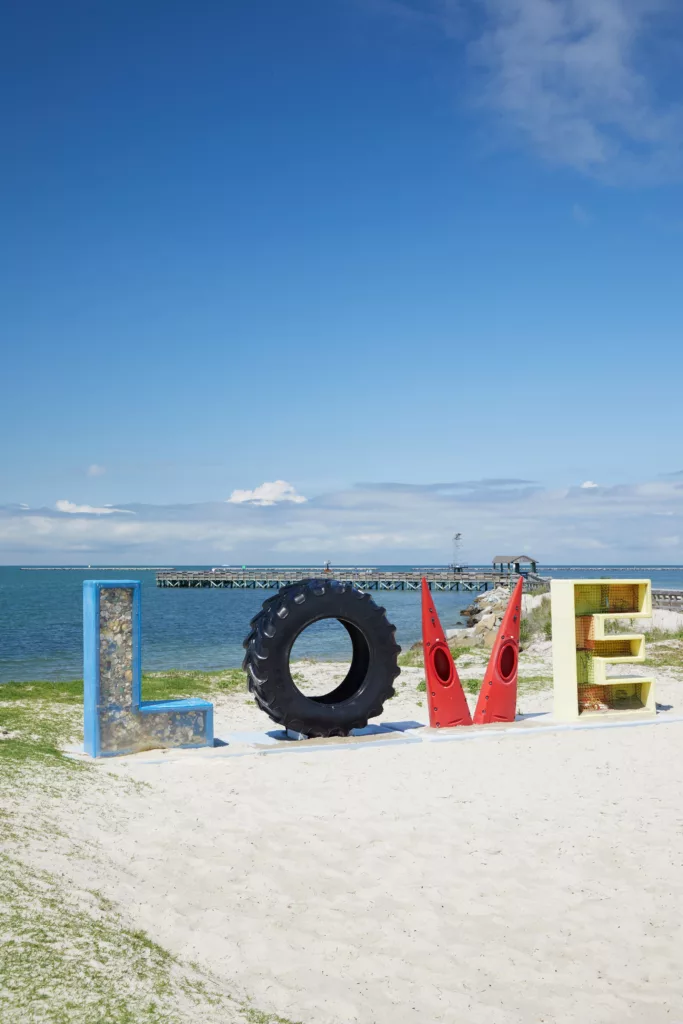
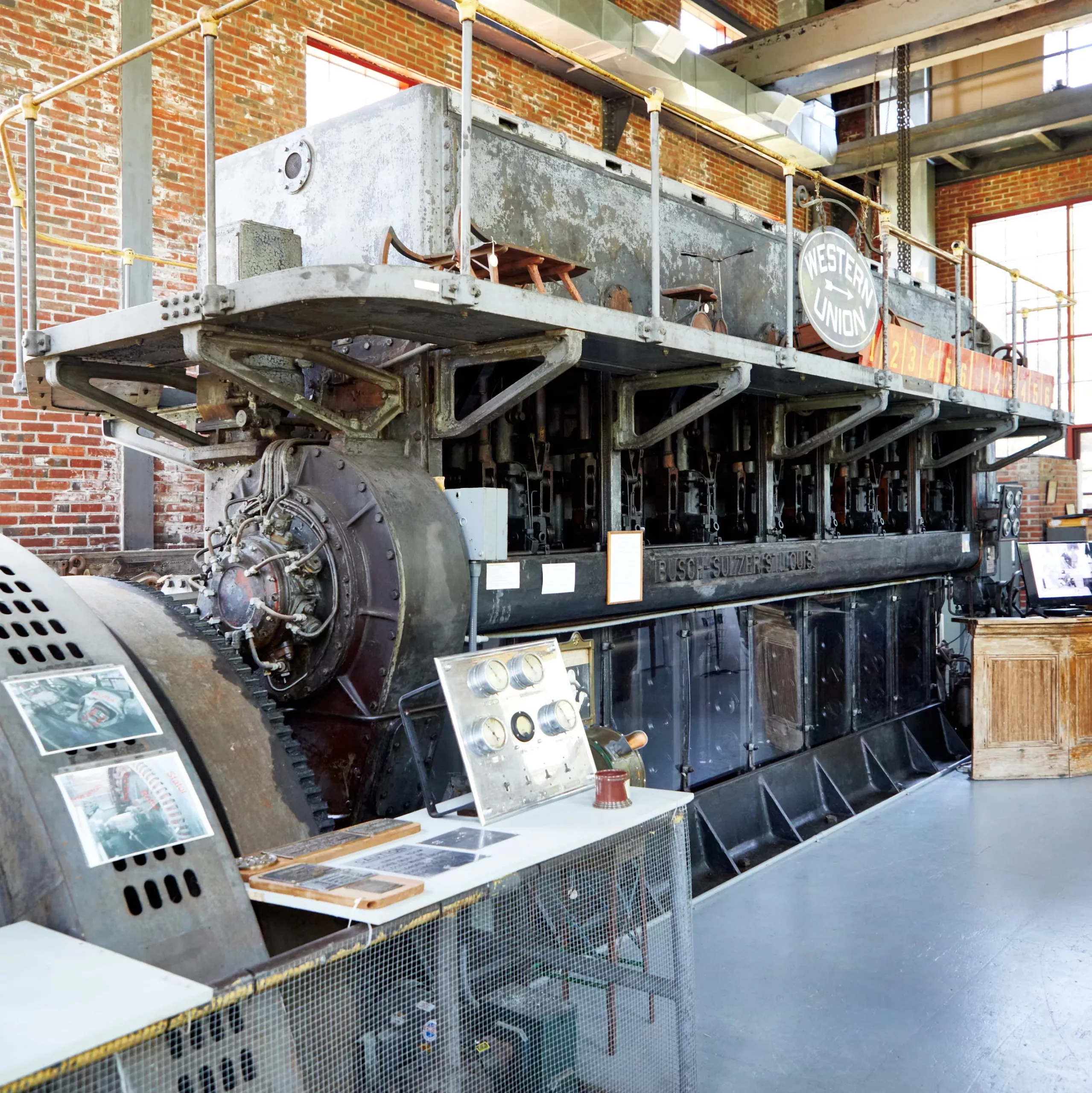
Exhibits at the Cape Charles Museum chronicle the town’s past. Pictured here is a locomotive engine, a nod to its glory days as a bustling railroad town.
Click here for more of Tammy Holloway’s recipes from the Bay Haven Inn.
A Town Renaissance
A new Yacht Center in town, spearheaded by Eyre Baldwin—a 12th generation member of an Eastern Shore family—has added an economic boost to the community, especially after the super yacht Casino Royale, a bona fide 276-foot Bond boat, motored into its deep-water channel. The center will also be a host port for Sail250 Virginia in 2026, with plans to welcome a small armada of tall ships next June. Baldwin, a local developer, philanthropist, and community steward, lives at Eyre Hall in nearby Cheriton, his family home since 1668.
“This area is in my DNA,” Baldwin tells me, as we enjoy a superb dinner at Hook@Harvey on the waterfront—seared scallops with a jumbo lump crab cake, foraged mushrooms, and a white wine cream sauce. And it’s not hard to imagine that a certain degree of responsibility comes with being a member of a family that settled on the Eastern Shore 350 years ago. A preservationist at heart, Baldwin looks for ways to reuse and repurpose properties in the area, including championing the Cape Charles Rosenwald School Restoration Initiative, designed to be a future hub for community engagement.
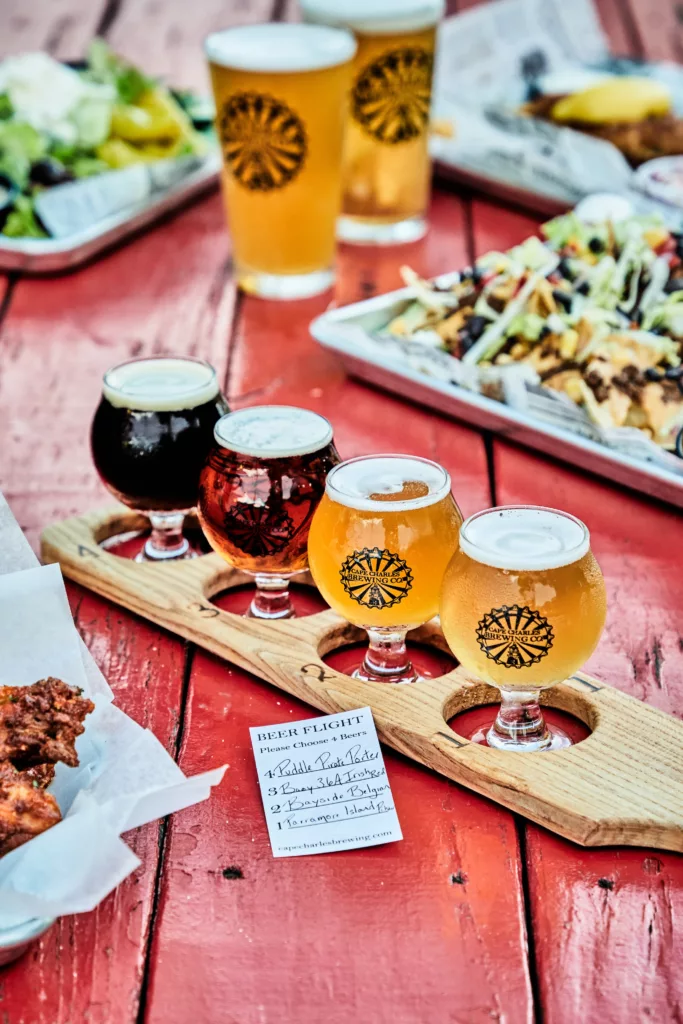
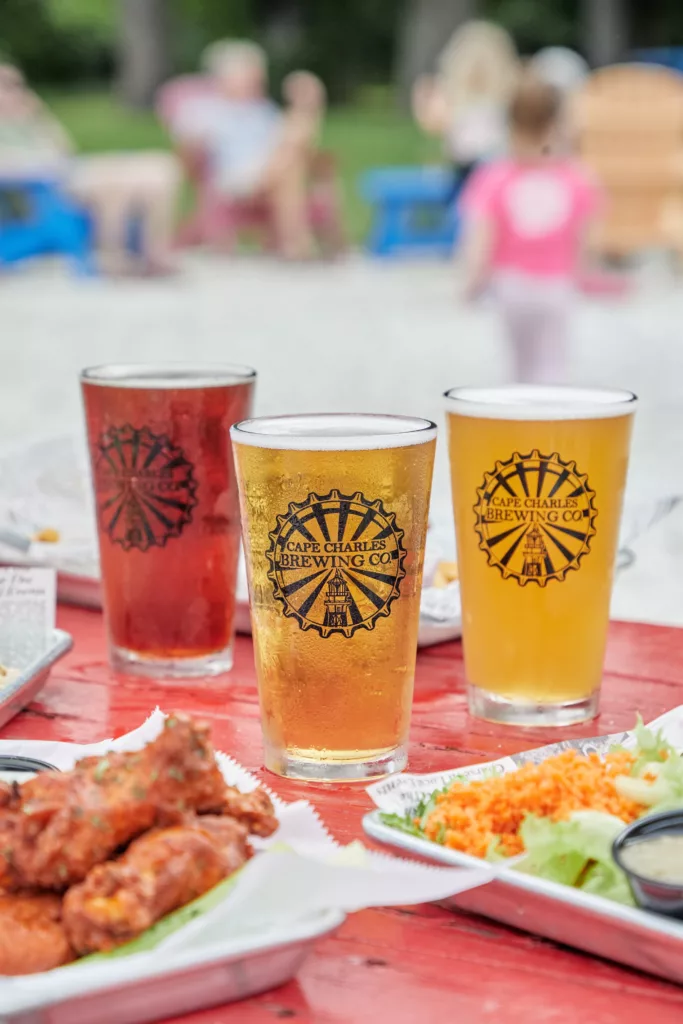
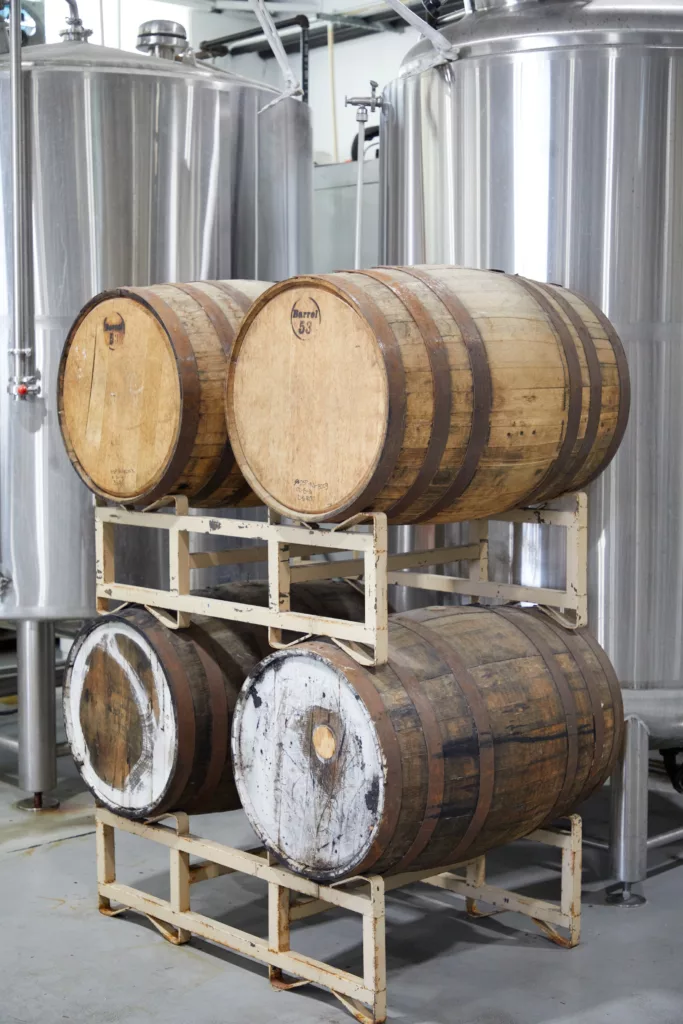
Adventures In Cape Charles
On Day Two, we head to Edible Picasso on Strawberry Street, where shop owner Lenore DeBellis opened a charming café after she and her husband relocated to Cape Charles in 2018. At this quaint spot in the center of town, her inclusive menu features health-forward
options like Asian noodle bowls, salads, paninis, and—according to some—the best poke bowls in Virginia.
But the most unique aspect of Edible Picasso is DeBellis’ charcuterie classes, where participants learn how to craft a Michelin-star–worthy charcuterie board. “We spend two hours together, and I teach charcuterie board styling techniques—from meat rosettes to slicing cheese,” DeBellis tells me.
Around the corner on Mason Avenue is Moonrise Jewelry, a Cape Charles favorite. In her storefront, founder and jewelry designer Meredith Lusk has singularly pioneered innovative, coastal wearable art in the form of eco-friendly “fish leather” that she sources in kaleidoscopic colors from Iceland. Her work has garnered a national following thanks to shout-outs in Lucky and Southern Living magazines and a spotlight on the Today Show. From bracelets to bowties, earrings, and more, she and her creative team repurpose the skins (primarily salmon and wolffish) into enviable statement pieces and vibrant accessories that would otherwise be discarded.
Lunchtime calls for a visit to The Shanty, where we order up a batch of super-addictive hush puppies that come drizzled with honey. They’re a tasty complement to my Creole shrimp po’boy and my husband’s ahi tuna sliders. We meet owner Jon Dempster, who hails from the seafaring town of Rockport, Massachusetts. He tells us he ended up in Cape Charles when the boat he was delivering to warmer waters landed there completely by accident. The local harbormaster at the time, Smitty Dize, talked him into staying and realizing his dream—to open a coastal restaurant.
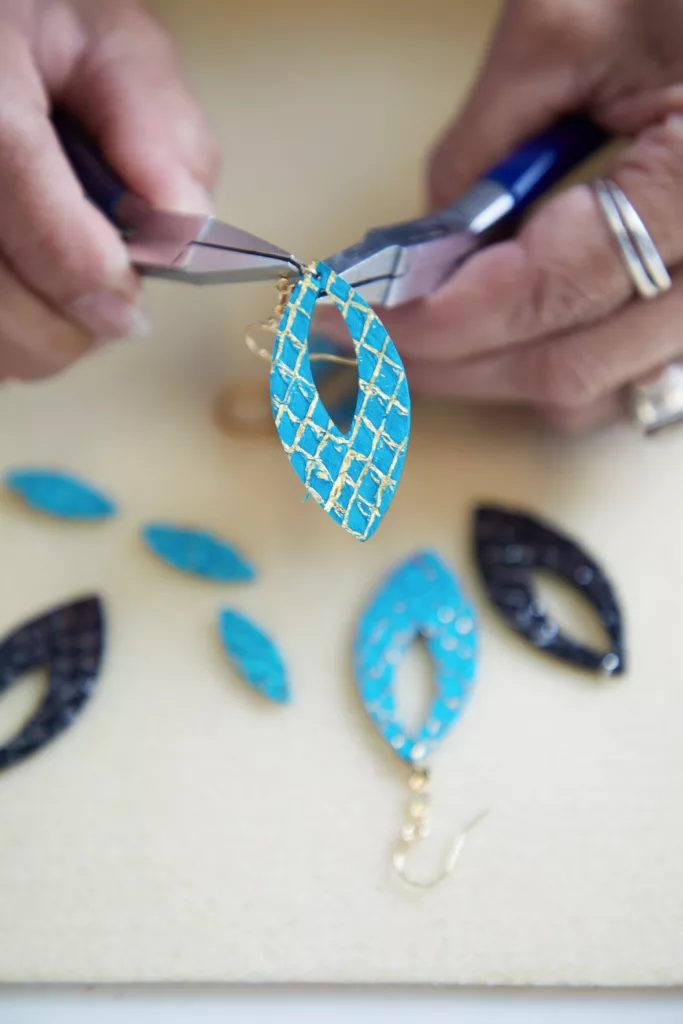
Meredith Lusk’s creative team crafts fish leather jewelry by hand in the Moonrise Jewelry studio on Mason Avenue.
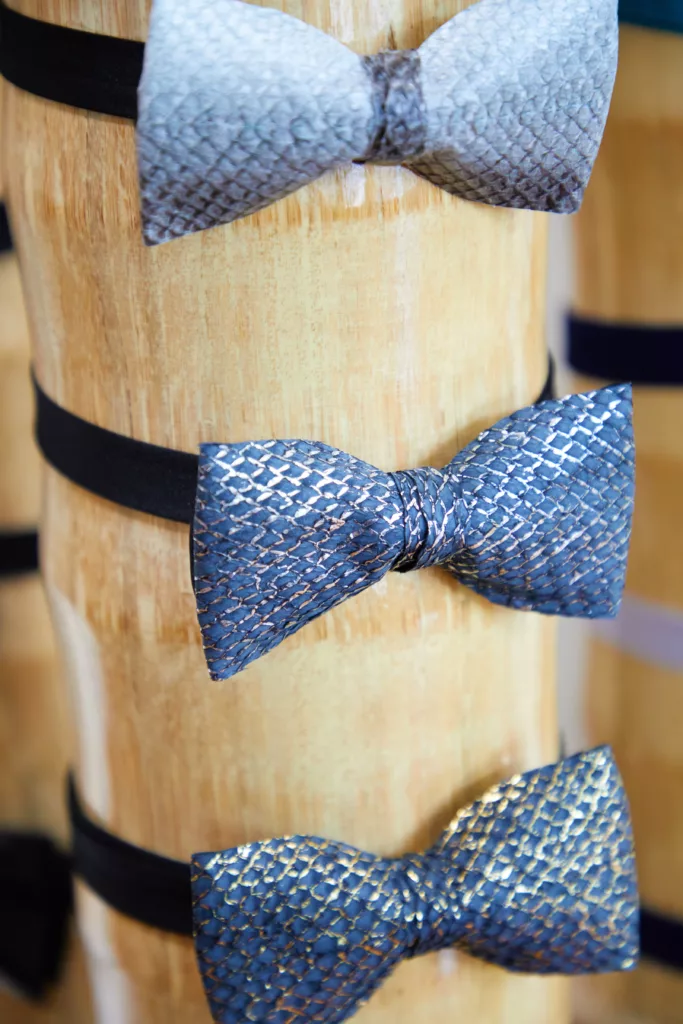
Fish leather bow tie.
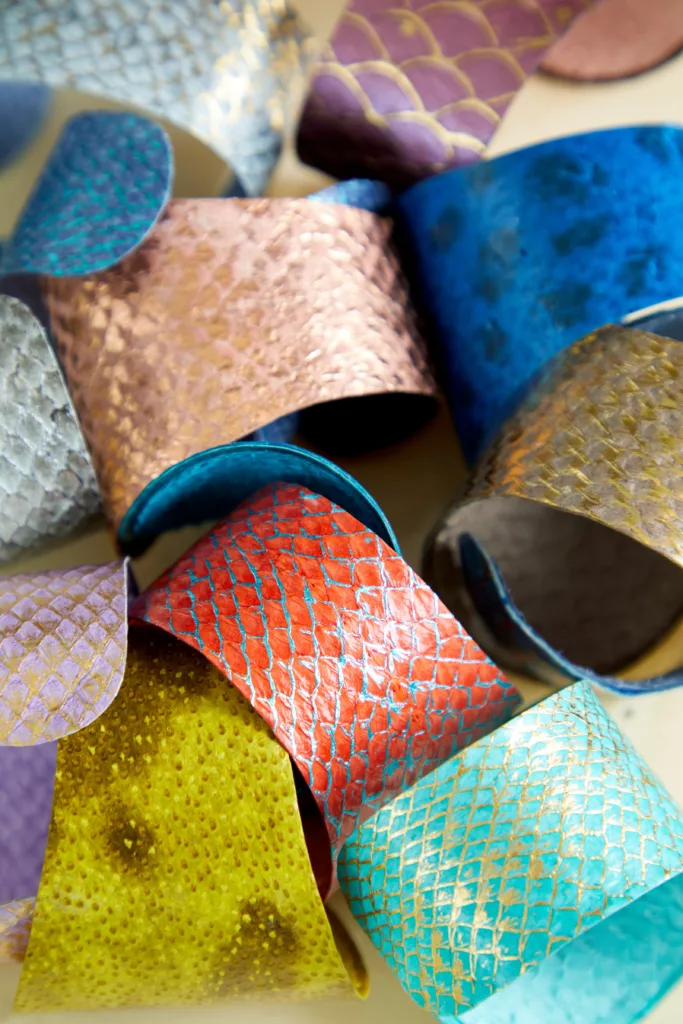
A colorful assortment of fish leather bracelets at Moonrise Jewelry. Most are made of salmon skin; top right and bottom left bracelets are wolffish.
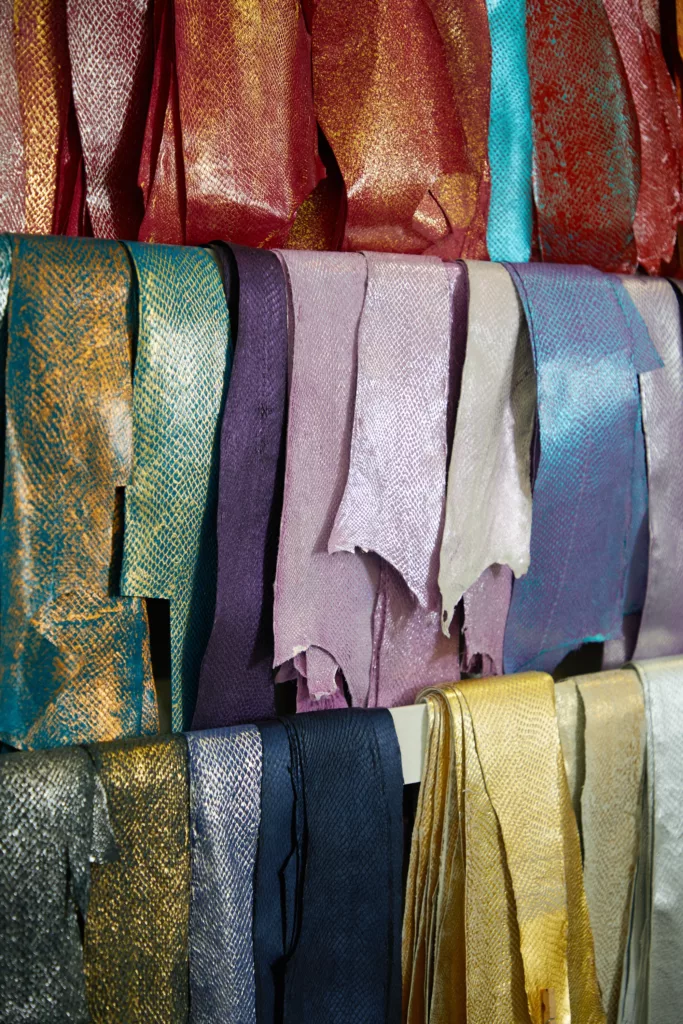
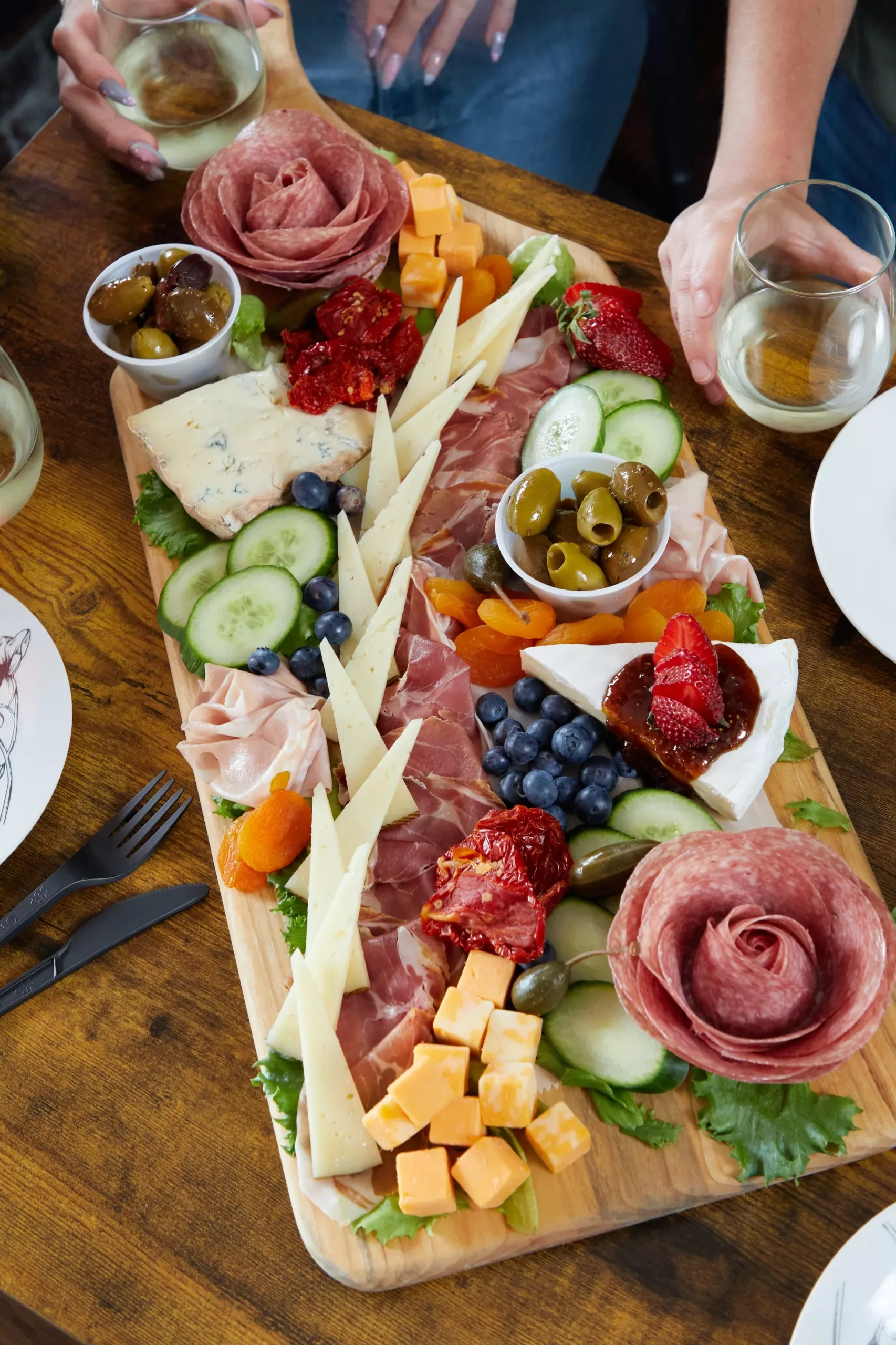
The perfect charcuterie board.
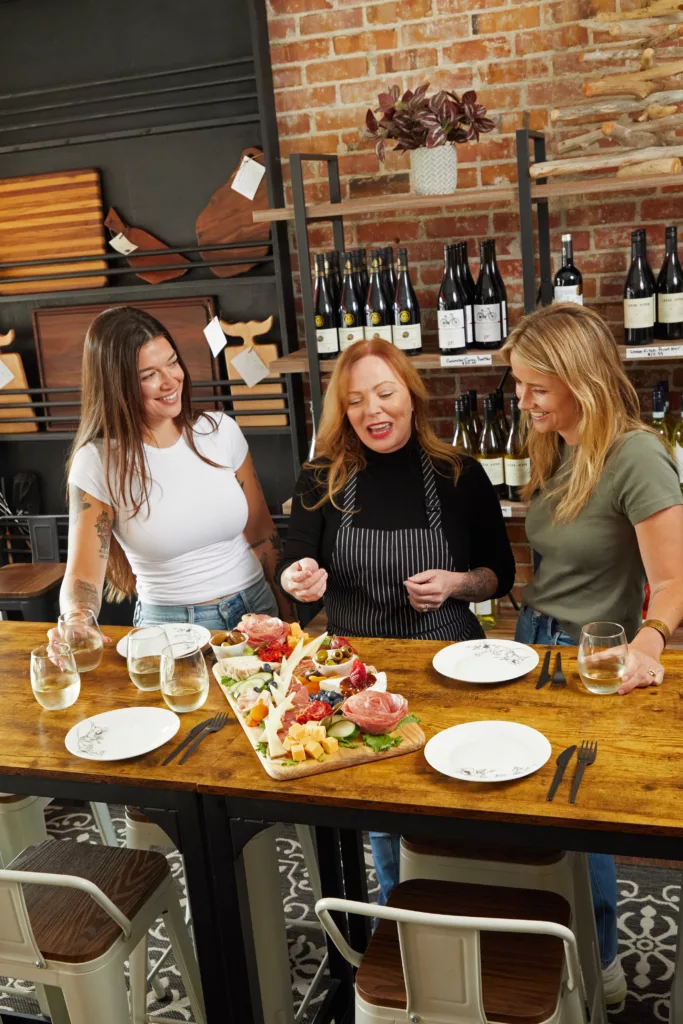
Lenore DeBellis instructs a charcuterie class at Edible Picasso with friends Katie Wendell Dodson and Alyssa Bennett.
Dempster roped his childhood friend Mike Doyle into the venture, and in 2012, the pair opened The Shanty with a sustainable, locally sourced, seafood-forward menu. Through the years, Dempster’s Cape Charles empire has expanded to include Deadrise Kitchen, Elephant & Octopus, and Brown Dog Ice Cream.
Sipping & Slurping
We make a point of stopping by Laughing King Oyster Co. and Vessel Vineyard, owned by Thomas and Erin Haney. They live on Old Plantation Creek just south of town, where they not only farm oysters but also operate an Airbnb, grow their own food, make wine, mind their menagerie of animals, and homeschool their three adorable children, Josephine, Samuel, and Vita. Erin’s sister happens to be the aforementioned jewelry maven, Meredith Lusk.
Thomas tends his oysters with razor-sharp focus and the dedication of a true steward. We mosey down to his dock, with Lampo, the family’s Great Pyrenees, leading the way, and board his oyster boat bound for the beds that he’s strategically positioned around the creek.
Oyster farming isn’t for the faint of heart, but Thomas has devised efficient systems, cobbling together parts and pieces from the local hardware store. He’s hooked up four basket tumblers to a solar panel along the boat’s gunwales that eliminate turning them by hand, requiring only the flip of a switch. He hops in and out of the boat into the creek’s waist-deep water as he sets baskets filled with oyster seeds, anchoring them with zip ties to a network he’s built of submerged rows of PVC piping. It’s all ingenious.
Once on land, we’re treated to a wine and oyster tasting like no other. On the edge of a forest, the Haneys built a picturesque open-air tasting “room,” where we’re treated to a flight of their wines—a rosé, a Chardonel, and a petit Manseng—made from grape varieties grown on two of their farm’s 18 acres. Erin serves up a dozen of Thomas’ freshly shucked Laughing King oysters and three versions of her delectably fresh goat cheese: with homemade fig jam, coated with herbs de Provence, and straight up. It’s a delightful, delicious, and relaxing experience—under the cool tree canopy, with a slight breeze coming off the water.
On Vessel Farm, the Haney’s home on Old Plantation Creek, they grow about 30 varieties of grapes: 7 they commercially bottle and an additional 20+ are in a test section. They’ve selected grapes that are hardy in Virginia—especially in the sometimes-finicky terroir of the Eastern Shore. “It was definitely trial and error,” Thomas confesses. With no previous winemaking experience, he dove in headfirst, making good use of YouTube videos, learning about preferred suppliers, weed control, which vines to plant and when, and how to actually make wine. The first harvest was a family affair, with all three Haney kids conscripted to stomp the grapes.
Erin’s cheese is courtesy of Cosmo, the family’s nanny goat and a doting mother to 3-month-old kids Minnie and Mickey. Goats, kids, chickens, ducks, and a goose graze in a fenced pasture frequently patrolled by Lampo. I’m elated to find Minnie to be quite the cuddler. As she takes a big sigh and falls asleep in my arms, I’m plotting my return to this little slice of heaven.
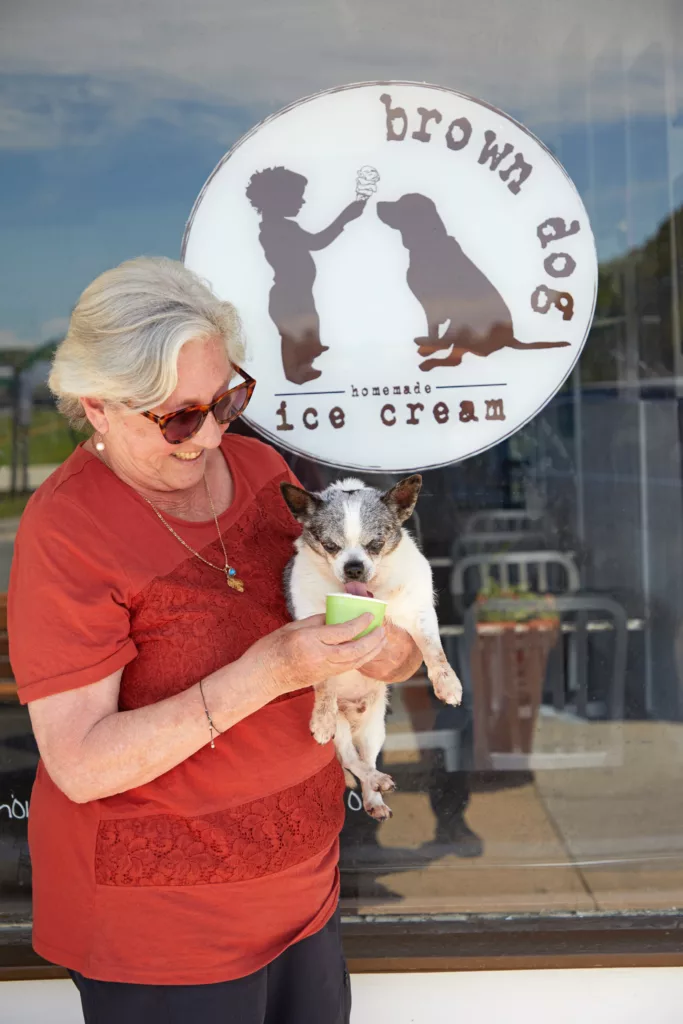
Tailwaggers frozen dog treats, Brown Dog Ice Cream’s own brand of pup cups, are popular with four-legged visitors.
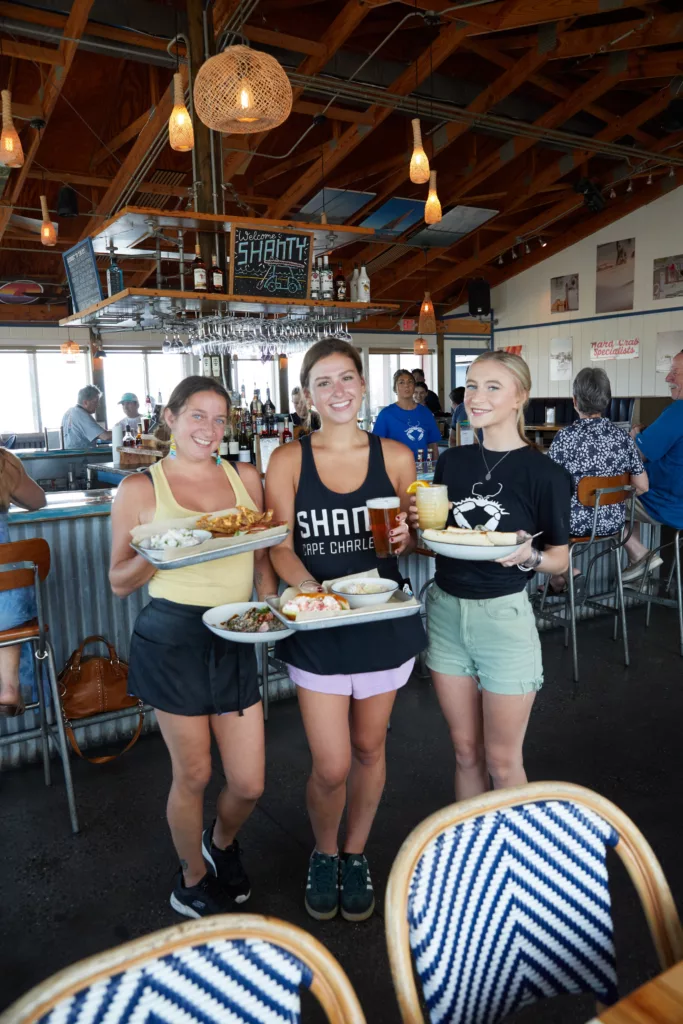
Servers in action at The Shanty.
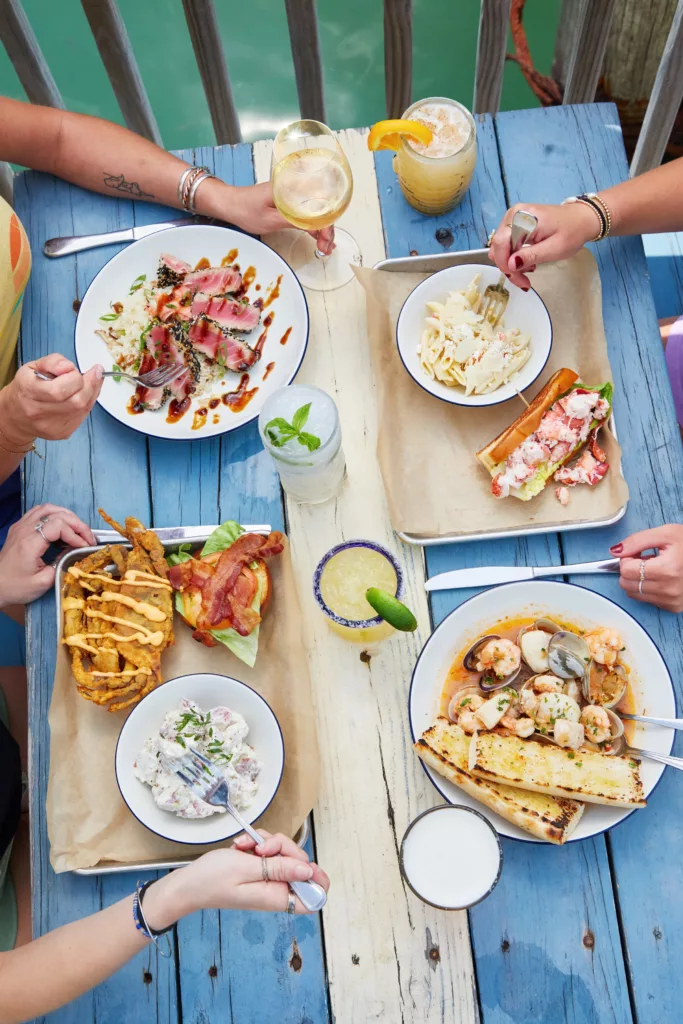
Fresher-than-fresh seafood at The Shanty, where dining al fresco is a summertime option.
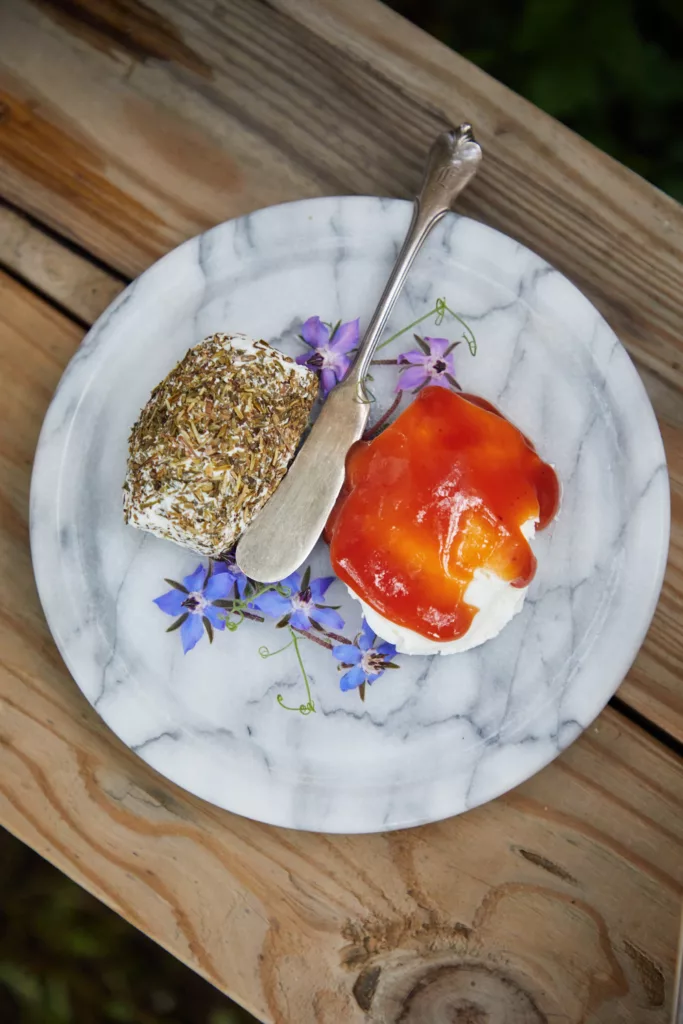
Homemade goat cheese and fig jam from Erin Haney.
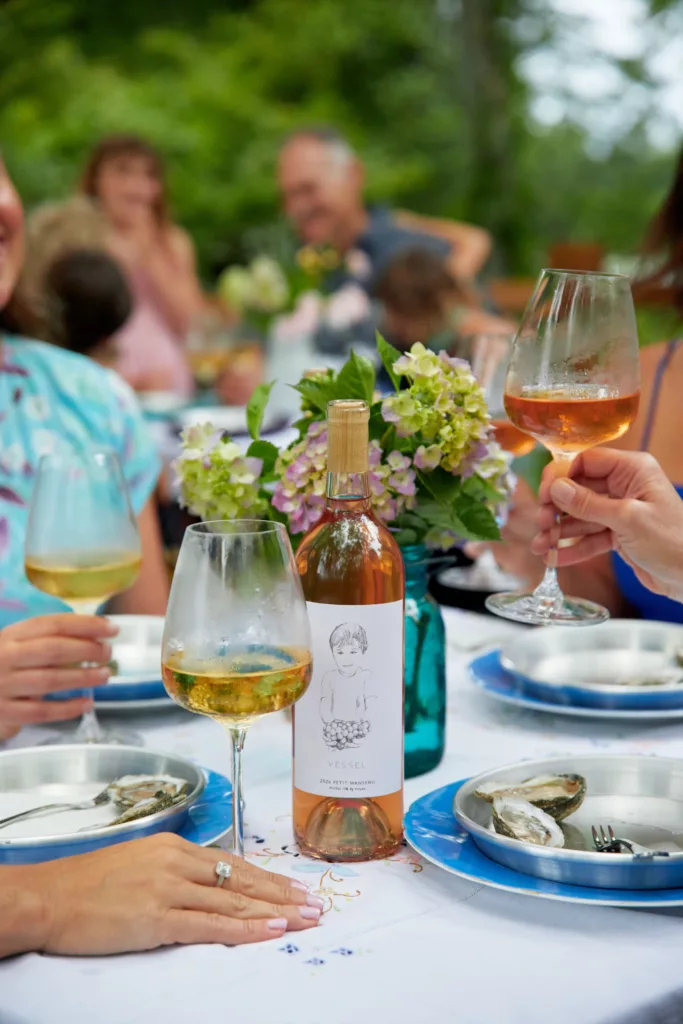
Enjoying wine and oysters at Laughing King Oysters and Vessel Farm. Wine labels feature pencil drawings of the three Haney children by their grandfather, Michael Haney. This one stars Samuel.
Where Still Waters Run Deep
Despite recently scoring a flurry of accolades—Southern Living’s Best Little Beach Town, Coastal Virginia’s Best Weekend Getaway, and achieving a Virginia Main Street community designation—Cape Charles is a place where still waters still run deep, remaining just slightly under the radar.
As my husband and I pack up and prepare to leave, it’s clear why so many visitors find themselves returning year after year—or relocating permanently. This isn’t just another coastal destination; it’s a place where Victorian charm meets modern convenience, where neighbors still wave from their golf carts, and where the sunset paints houses in the same warm hues that color the evening sky.
Cape Charles has mastered the delicate art of growth without losing its soul, offering both the tranquil pace of small-town life and the proximity to urban amenities. In a world that moves increasingly fast, it remains a reminder that sometimes the best destinations are those that invite you to slow down, breathe deep, and stay awhile.
But, with its growing reputation, Cape Charles stands at a crossroads. The secret is getting out about this slice of Americana on the Chesapeake Bay, a thriving community of entrepreneurs, artists, and dreamers. For now, visitors can still experience the authentic charm that has captivated so many. The question isn’t whether Cape Charles will continue to grow and evolve; it’s whether you’ll discover its magic before the rest of the world catches on.
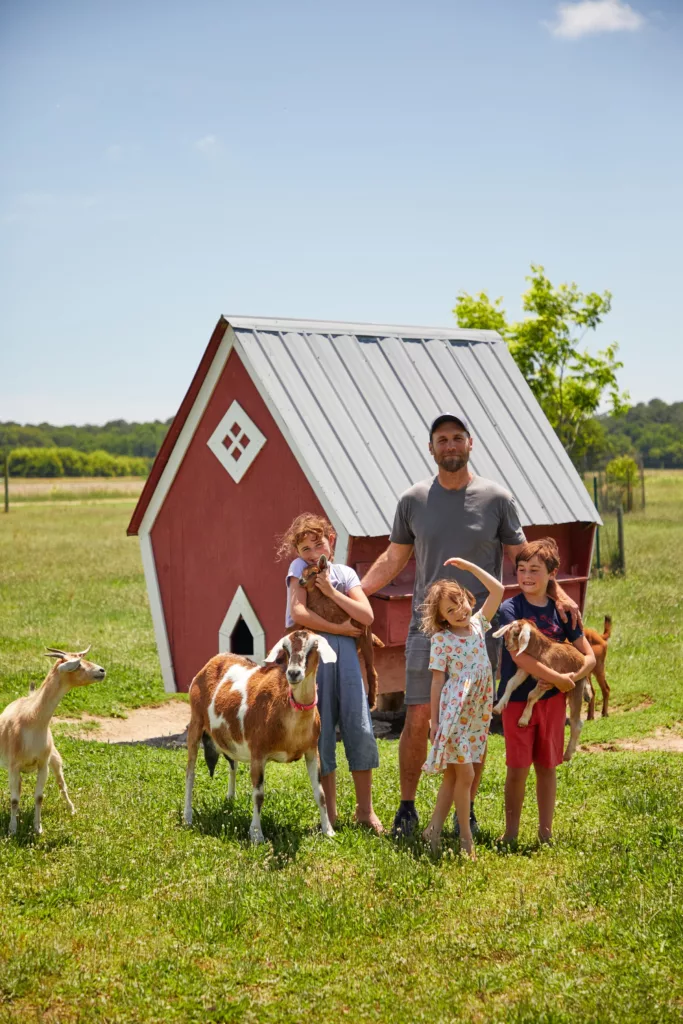
Farmer, dad, and aquaculturist Thomas Haney and his kids (L-R: Josephine, Vita, and Samuel) with their goats. Far left is Plymouth, nanny goat to (her) kids Mickey and Minnie, while Cosmo (with the stylish pink collar) takes her role as a supervising aunt very seriously.
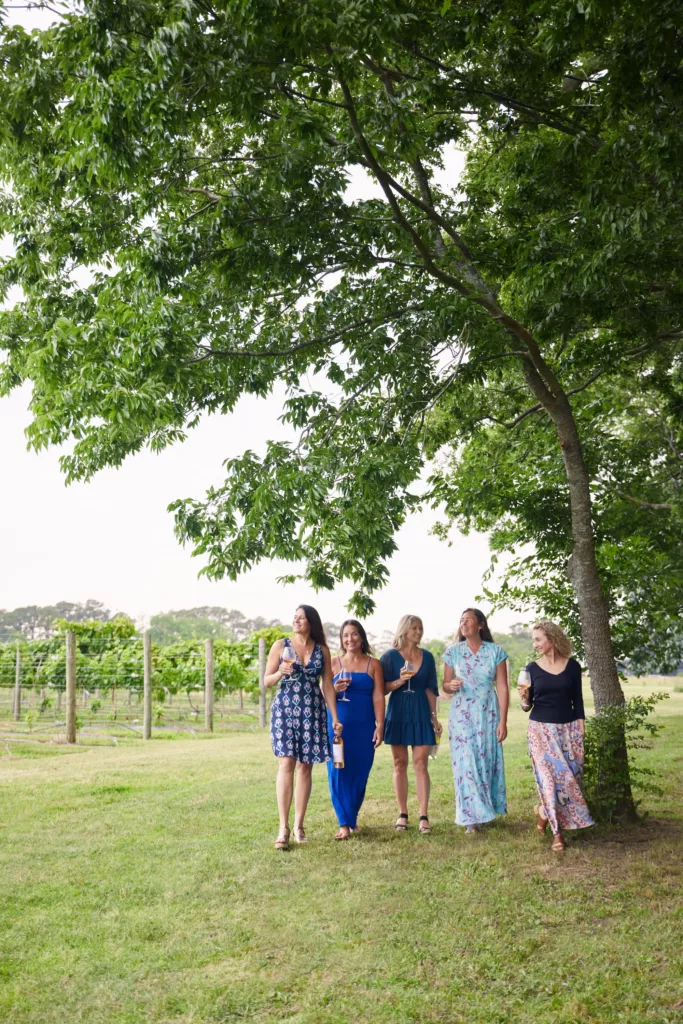
Strolling around Vessel Farm are (L-R) Moonrise Jewelry owner Meredith Lusk, Sara Seay, Laurie Bohl, Meredith’s sister Erin Haney, and Thomas’ mother, Rosalind Haney.
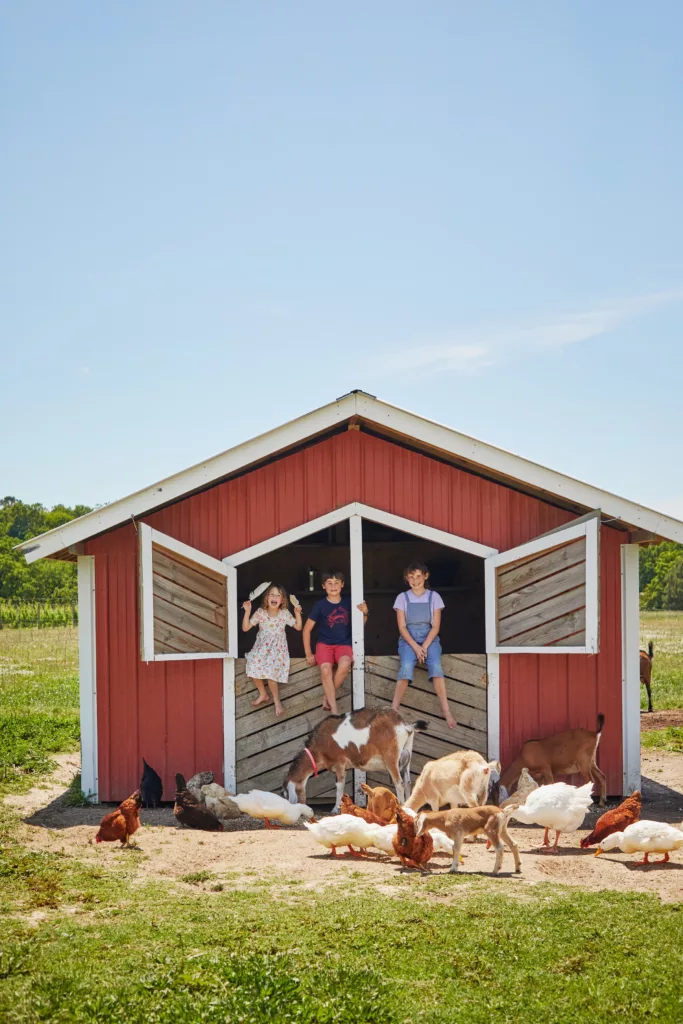
Click here for more of what Cape Charles has to offer.
This article originally appeared in the August 2025 issue.
